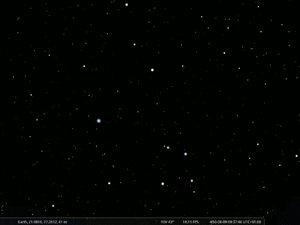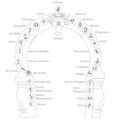Hasta: Difference between revisions
From All Skies Encyclopaedia
Hasta
No edit summary |
No edit summary |
||
| Line 15: | Line 15: | ||
=== Transfer and Transformation of the Constellation === |
=== Transfer and Transformation of the Constellation === |
||
<gallery> |
|||
File:Hasta nakshatras in Temple draw+lbl 4ase.jpg|Hasta 10th century CE |
|||
File:Nakshatra temple magDraw lbl.jpg|Display of all 28th nakshatras in silver arch with candles in Tirupperunthurai (Athmanathaswamy temple) near Aranthangi, India, 10th century CE. (SMH 2025). |
|||
File:Nakshatras in Temple draw+lbl 4ase.jpg|Display of all 28th nakshatras in a door frame in Tirupperunthurai (Athmanathaswamy temple) near Aranthangi, India, 10th century CE. (SMH 2025). |
|||
File:軫宿(仏像図彙).png|Hasta Chinese |
|||
File:13 Hasta draw.png|Hasta as reconstructed by Jones (1720) |
|||
</gallery> |
|||
== Mythology == |
== Mythology == |
||
Revision as of 16:07, 30 October 2025
Hasta (हस्त) is an Indian name, used by the Indian Vedic tradition. Most of these names are roughly 3000 years old. They pre-date Hinduism but were taken over by it.
Etymology and History
Name Variants
- Hasta
- Kara,
- Ravibha
The term "Hasta" means "hand". Temple depictions show it with five stars, and it is identified with the five stars (β, α, ε, γ, and δ Corvi) of modern Corvus that form a remarkable and easily recognizable pattern in the night sky.
Origin of Constellation
Transfer and Transformation of the Constellation
Mythology
mnemonic tales and cultural significance
Weblinks
References
- References (general)










